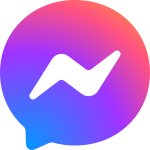Facebook[3] Messenger, souvent appelé simplement Messenger, est un service de messagerie électronique. messagerie instantanée[1] est une application américaine développée par Meta Platforms. Depuis sa première présentation au public le 9 août 2011, elle a été régulièrement mise à jour pour fonctionner sur une variété de systèmes d'exploitation tels qu'Android, iOS, Windows et macOS. En tant que plateforme de messagerie instantanée, il a été largement utilisé en raison de son large éventail de fonctionnalités conviviales. Il offre des services de communication fluides et une pléthore de fonctionnalités, harmonieusement intégrées au système de messagerie instantanée de l'entreprise. Plate-forme Facebook[2]. En tant qu'élément essentiel de l'écosystème des métaplateformes, Messenger est en perpétuelle évolution grâce à des mises à jour fréquentes et à l'introduction de fonctionnalités innovantes. Son évolution a été ponctuée par d'importantes procédures judiciaires, notamment Young v. Facebook, Inc., Fraley v. Facebook, Inc. et Force v. Facebook, Inc.
Messagerégalement connu sous le nom de Facebook Messengerest un Américain propriétaire messagerie instantanée L'application et la plateforme développées par Métaplateformes. Développé à l'origine en tant que Facebook Chat en 2008, l'entreprise a réorganisé son service de messagerie en 2010 et a lancé un service de messagerie autonome. iOS et Android en 2011, et a lancé des applications autonomes de Portail Facebook pour les appels sur Messenger en 2018. En avril 2015, Facebook a lancé une application interface du site webEn avril 2020, Facebook a lancé Messenger.com et a séparé la fonctionnalité de messagerie de l'application principale de Facebook, permettant aux utilisateurs d'utiliser l'interface web ou de télécharger l'une des applications autonomes. En avril 2020, Facebook a lancé une application de bureau Messenger pour Fenêtres et macOS.
 | |||||||||
| Développeur(s) | Métaplateformes | ||||||||
|---|---|---|---|---|---|---|---|---|---|
| Version initiale | 9 août 2011 Avril 2020 | ||||||||
| Version(s) stable(s) [±] | |||||||||
| |||||||||
| Version(s) préliminaire(s) [±] | |||||||||
| |||||||||
| Système d'exploitation | Web, Android, iOS, Windows 10, Windows 11, Windows Phone, macOS, WatchOS, Wear OS | ||||||||
| Taille | 53.33 MB (Android) 124.1 MB (iOS) 169,4 Mo (Windows 10 et Windows 11) 91.3 MB (macOS) | ||||||||
| Disponible en | 111 langues | ||||||||
Liste des langues Afrikaans, Albanais, Amharique, Arabe, Arménien, Assamais, Azerbaïdjanais, Basque, Biélorusse, Bengali, Bosniaque, Breton, Bulgare, Birman, Catalan, Cebuano, Corse, Croate, Tchèque, Danois, Néerlandais, Néerlandais (België), Anglais (UK), Anglais (US), Anglais (à l'envers), Espéranto, Estonien, Féroïen, Philippin, finnois, français (Canada), français (France), frison, peul, galicien, géorgien, allemand, grec, guarani, gujarati, créole haïtien, hausa, hébreu, hindi, hongrois, islandais, indonésien, irlandais, italien, japonais, japonais (Kansai), javanais, kannada, kazakh, khmer, kinyarwanda, coréen, kurde (kurmanji), kirghize, lao, letton, lituanien, macédonien, malgache, malais, malayalam, maltais, marathi, mongol, népalais, norvégien (bokmal), norvégien (nynorsk), odia, pachto, persan, polonais, portugais (Brésil), portugais (Portugal), punjabi, roumain, russe, sarde, serbe, shona, silésien, chinois simplifié (Chine), sinhala, slovaque, slovène, somali, kurde sorani, espagnol, espagnol (Espagne), swahili, suédois, syriaque, tadjik, tamazight, tamoul, tatar, télougou, tetun, thaï, chinois traditionnel (Hong Kong), chinois traditionnel (Taïwan), turc, ukrainien, ourdou, ouzbek, vietnamien, gallois et zaza. | |||||||||
| Type | Messagerie instantanée, VoIP | ||||||||
| Licence | Logiciels gratuits, propriétaire | ||||||||
| Site web | messager.com facebook.com/messages | ||||||||
Messenger est utilisé pour envoyer des messages et échanger des photos, des vidéos, des autocollants, des fichiers audio et des fichiers, ainsi que pour réagir aux messages d'autres utilisateurs et interagir avec les autres utilisateurs. bots. Le service prend également en charge voix et appel vidéo. Les applications autonomes permettent l'utilisation de plusieurs comptes, de conversations avec des chiffrement de bout en boutet de jouer à des jeux.